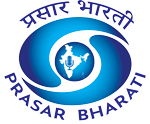Spotlighting the Tradition
The world is left in awe of the scale and grandeur of the recently concluded Maha Kumbh 2025 at Prayagraj. The Maha Kumbh this year took place on the banks of the Ganga, which witnessed a record gathering of a multitude: sages, pilgrims, craftsmen, and wonder-struck millions of devotees. The Maha Kumbh was not just a spiritual gathering but also a grand spectacle of India’s ancient cultural heritage.
Among the supporting pillars of this spectacle were India’s artisans such as the tentmakers, idol sculptors, weavers, and metalworkers and so on; who played a crucial role in conceptualizing the visual and functional beauty of the festival. Among the schemes that we can see these artisans being able to participate in, was the PM Vishwakarma Yojana, which seeks to promote and conserve indigenous Indian craftsmanship. The success of the scheme was evident at every nook and corner of the Maha Kumbh, highlighting its use in the conservation of India’s intangible cultural heritage.
Maha Kumbh and the Artisans Who Make It Happen
The biggest religious festival in the world, the Maha Kumbh, had the support of an army of unseen professionals working behind the scenes. The Maha Kumbh itself was a temporary city. Such cities must have a sophisticated system that must be carried out with precision craftsmanship to run without a glitch. And so, it did. The festival preparations were underway for years for a festivity of 45 days. Artisans, craftsmen, and traditional workers poured their skills into every detail of the festival leading to its astounding success.
Artisans from across the country flocked in, covering the landscape with a giant tent city that accommodated millions of pilgrims. Metal and wood artisans spent months creating beautiful idols of gods and goddesses, intricately designed and elaborate in keeping with the revered Hindu traditions. Weavers and textile artists worked day and night to produce sacred cloths, flags, prayer mats, and so on which were woven into rituals and processions. The sound of temple bells, puja thalis, and other sacred objects created by master brass and copper artisans filled the air, pervading the sacred ambiance of the Maha Kumbh.
These artisans are living embodiments of India’s art and craft legacy. They are mostly a part of the age-old family lineages, each dedicatedly working in their respective profession. Their existence has been threatened, however, in the machine-made commodity age, with mass production intimidating to wipe them out. That is where the Vishwakarma Yojana came to picture and helped them, recognizing the Maha Kumbh artisans not only by their nomenclature but actually assisting them substantially.
Reviving India’s Heritage Crafts: The PM Vishwakarma Yojana
PM Vishwakarma Yojana, rolled out in 2023, is an innovative scheme to empower India’s skilled craftsmen and artisans. The scheme will breathe new life into 18 traditional professions such as blacksmithing, sculpting, pottery, goldsmithing, and weaving through financial assistance, skill enhancement, modern equipment, and marketing connectivity.
The impact of the program was particularly evident in the case of the Maha Kumbh festival. One of the turning points in the livelihoods of these conventional idol-makers from cultural hubs like Varanasi and Prayagraj was the humongous government-sponsored aid they received for prepping for this massive event. Thousands of statues of Hindu Gods and Goddesses were ordered from these skilled artists, who are famous for their intricate workmanship which has been passed across generations. This project was vital in keeping alive their centuries-old craft as well as providing them with a reliable and sustainable source of earnings.
Most of these artists had been barely scraping by for years due to the surge of mass-produced, less expensive idols made from non-environment-friendly materials. But by employing only sustainable materials and the traditional process, this program brought their art back to life and matched the Maha Kumbh’s trade and cultural aspirations. Furthermore, the exposure that they received at the festival gave them a boost and opened up new markets for them to sell their art outside of their own community. This program guaranteed that these craftspeople were respected and empowered to continue their craft, even for generations to come by combining economic support with cultural preservation.
Even beyond the Maha Kumbh, the Vishwakarma Yojana has been a lifeline for India’s skilled craftsmen and women. They have been provided with financial support to buy raw material and improve tools. In addition to this, the skill development training that is given as a part of the scheme, has enabled them to adapt to the demands of the times without compromising on their traditional techniques. The market linkage support under the scheme has also helped artisans to market their products directly to consumers without intermediaries.
Through recognition of India’s indigenous strengths and general support, the PM Vishwakarma Yojana can be very beneficial towards the conservation and recharging of the nation’s rich cultural heritage.
The Maha Kumbh Marketplace: A Cultural and Economic Renaissance
The Maha Kumbh 2025 festival also featured a unique program in the shape of the Kala Gram (Art Village), in which artisans from across India were invited to present and sell their exquisite crafts. With the support of the Vishwakarma Yojana scheme, this bazaar witnessed the revival of India’s lost arts.
Banarasi weavers exhibited their beautiful silk sarees and dhotis, which were seen, liked, and purchased by visitors; saints and devotees. Uttar Pradesh and West Bengal’s terracotta artisans exhibited beautifully handmade digas, idols, and ritual objects. Brass and copper artisans revived the old tradition of temple bell and other religious object manufacture. Wood carvers exhibited their hand-carved pieces, including beautifully carved doors, chariots, and small temple complexes.
This government-backed scheme not only rescued India’s vast cultural heritage but provided much-needed financial stability to thousands of artisans who cannot sell their craft. Most of the artisans testified that their earnings from the Maha Kumbh festival surpassed their average annual earnings, showcasing the galvanizing synergy between craft preservation and cultural tourism. This is a strong economic boost to the trade.
The Challenges Ahead
The Vishwakarma Yojana scheme has been a huge success so far, but there are a few issues, as noticed during the Maha Kumbh, that should be taken care of. The first of these is that artisans are not computer literate and thus are unable to work on e-commerce websites and access a global market.
Although government support has been instrumental in reviving traditional idol-making in the pre-Maha Kumbh period, to sustain the momentum in the post-festival phase will require well-thought-out, long-term strategies. Ad hoc support for large events is wonderful, but in the absence of continuity, the artisans may slide back into economic adversity. Having permanent craft centres in big cities and major pilgrimage destinations may provide year-round visibility and sales opportunities for the artisans. The centres would not only receive tourists and pilgrims but also be cultural landmarks that celebrate India’s age-old heritage.
In the interconnected world of today, use of virtual channels along with physical markets is necessary. Online training will allow artisans to learn how to sell and market their goods over the internet, expanding their market to a wider region beyond their localities. They could display their creations on social networks and internet sites because of literacy in digital areas, opening up new sources of revenue. Few artisans have already realised this and are doing good while the others are yet to catch up.
In addition, incorporating the connection between two or more government schemes such as the One District One Product (ODOP) scheme and the Vishwakarma Yojana has the potential to form a coordinated system that provides financial support, training, and market linkage. By coordinating the schemes, artisans gain a holistic support system that not only helps them maintain their traditional art forms but also provides them with long-term financial security.
In addition to this, the need for an enhanced distribution chain still exists. While festival season support through the Kala Gram initiative temporarily gave a boost to sales, the actual challenge remains in creating long-term success of the artisans beyond festival seasons. Overcoming these challenges will unlock the true potential of the Vishwakarma Yojana and facilitate the success of India’s talented artisans.
Keeping the Tradition Alive
Although the 2025 Maha Kumbh has passed, its spirit lives on in the lives of the artisans whose dazzling work bedecked its majestic platform. The glitters of India’s craft heritage have begun to shine bright. The PM Vishwakarma Yojana has proved that good governance has the potential to marry the world of tradition with the world of the modernity. By empowering the artisans with the resources they need, India is not just preserving its cultural heritage, but ensuring that the hands that build tradition continue to flourish.
Looking ahead, the success of Vishwakarma Yojana at Maha Kumbh is a clear reminder that heritage does not concern the past – it is concerned with creating a future where culture, craft, and commerce are in equilibrium. This initiative has proved that with proper support, India’s traditional ways can not only be conserved, but can flourish alongside the forces of development and innovation.
Bio- R. Savitha is an accomplished educator and author with extensive experience developing innovative teaching-learning materials and training programs. With close to 12 years of teaching experience across grades 1 to 12 (CBSE), she has also served as the Head of the English Department in a premier CBSE school, where she led overall curriculum planning and academic initiatives.














